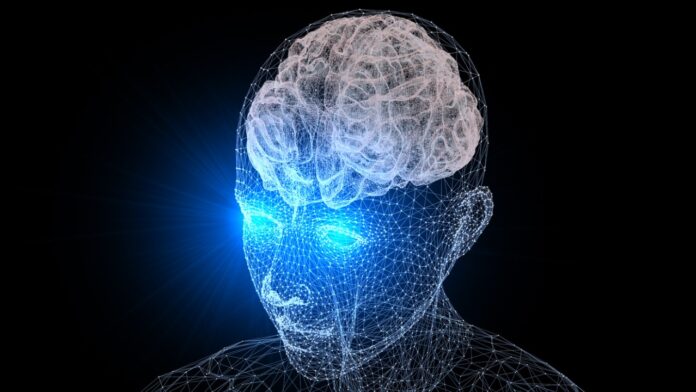Introduction
Welcome to the enthralling journey into the enigmatic realm of the brain and its interplay with science and art. In “The Mind’s Eye: A Vision of the Brain in Science and Art,” we embark on a captivating exploration of the brain’s mysteries and the unique ways in which science and art converge to unravel its secrets. Join us as we peer into the depths of the mind’s eye, seeking to understand the marvels of human cognition and creativity.
The Art of Understanding the Brain
“The Mind’s Eye: A Vision of the Brain in Science and Art” is a testament to the beauty of scientific exploration and artistic expression. As we delve into the complexities of the brain, we discover that science and art share a profound connection in their pursuit of understanding the human mind.
The Neuroscience of Vision: Unraveling Perception
The human brain’s ability to perceive and interpret the visual world is a wonder of evolutionary engineering. “The Mind’s Eye: A Vision of the Brain in Science and Art” delves into the neuroscience of vision, uncovering the intricate pathways that transform light into meaningful images in our minds.
Artistic Representations of the Brain: A Window into Thought
Throughout history, artists have sought to capture the essence of human thought and emotion. “The Mind’s Eye: A Vision of the Brain in Science and Art” explores the myriad ways in which artists have depicted the brain, providing us with a visual journey through the evolving understanding of this enigmatic organ.
The Brain’s Cognitive Landscape: Memory and Emotion
Memories and emotions shape the tapestry of human experience. “The Mind’s Eye: A Vision of the Brain in Science and Art” delves into the neural mechanisms behind memory formation and emotional processing. From the hippocampus to the amygdala, we discover the brain’s cognitive landscape and its profound impact on our lives.
Language and Creativity: Unleashing the Imagination
Language and creativity are defining features of human intelligence. “The Mind’s Eye: A Vision of the Brain in Science and Art” explores the regions of the brain responsible for language processing and creative expression. We delve into the artistry of language and the boundless imagination it unlocks.
The Synesthetic Mind: Where Senses Collide
In some individuals, the senses intertwine to create a synesthetic experience. “The Mind’s Eye: A Vision of the Brain in Science and Art” unravels the intriguing phenomenon of synesthesia and how it provides a unique bridge between the realms of perception and artistic expression.
FAQs
Q1: How does the brain process emotions?
The brain processes emotions through a complex network of interconnected regions, including the amygdala, hippocampus, and prefrontal cortex. “The Mind’s Eye: A Vision of the Brain in Science and Art” explains how these areas work together to give rise to the rich tapestry of human emotions.
Q2: Can art therapy benefit the brain?
Yes, art therapy has been shown to have positive effects on the brain and mental well-being. “The Mind’s Eye: A Vision of the Brain in Science and Art” explores how engaging in artistic activities can promote relaxation, reduce stress, and enhance cognitive functions.
Q3: How do artists portray emotions through their work?
Artists portray emotions through various techniques, such as color choice, composition, and symbolism. “The Mind’s Eye: A Vision of the Brain in Science and Art” discusses how artists use these elements to evoke specific emotions and create powerful connections with viewers.
Q4: What is the role of the prefrontal cortex in creativity?
The prefrontal cortex plays a crucial role in creative thinking and problem-solving. “The Mind’s Eye: A Vision of the Brain in Science and Art” explores how this region of the brain enables us to generate novel ideas, think flexibly, and make connections between seemingly unrelated concepts.
Q5: How does the brain perceive visual illusions?
Visual illusions occur when the brain’s perception deviates from the objective reality of a visual stimulus. “The Mind’s Eye: A Vision of the Brain in Science and Art” explains the underlying mechanisms of visual illusions and how they provide insights into the brain’s perceptual processes.
Q6: Can art change the way we think?
Art has the power to influence our thoughts, perceptions, and perspectives. “The Mind’s Eye: A Vision of the Brain in Science and Art” discusses how exposure to art can broaden our horizons, stimulate critical thinking, and encourage new ways of interpreting the world.
Conclusion
“The Mind’s Eye: A Vision of the Brain in Science and Art” has taken us on a captivating journey into the depths of the human brain and its intricate relationship with science and art. We have witnessed the awe-inspiring complexity of perception, the expressive power of artistic representations, and the profound impact of cognition and creativity on our lives.
As we conclude this remarkable exploration, let us continue to embrace the wonders of the mind’s eye. Through the fusion of science and art, we gain a deeper understanding of ourselves and the incredible potential that lies within each of us.
============================================


